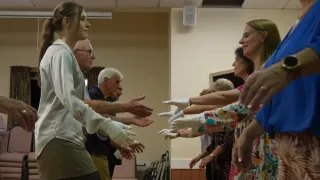August 22, 2023
Fruit Grower who Opposes Same-Sex Marriage Wins Ruling over Access to Public Market
READ TIME: 1 MIN.
The rights of a Michigan fruit grower were violated when a city barred him from a seasonal market because of his opposition to same-sex weddings at his orchard, a judge said.
East Lansing's decision to exclude Steve Tennes and Country Mill Farms in 2017 "constituted a burden on plaintiffs' religious beliefs," U.S. District Judge Paul Maloney said Monday, applying a U.S. Supreme Court precedent to the case.
"Plaintiffs were forced to choose between following their religious beliefs and a government benefit for which they were otherwise qualified," Maloney said.
Tennes grows apples and other fruit in Eaton County, 22 miles away from East Lansing. He also had made his farm available for weddings.
But Tennes wasn't allowing same-sex weddings, citing his religious beliefs. When he expressed his views on Facebook, he said he wasn't invited back to the East Lansing market for the 2017 season.
Maloney issued an injunction that year, ordering the city to reinstate him while Tennes' lawsuit moved forward.
"He serves and welcomes everyone to his stand. No one is ever turned away," attorney John Bursch said Tuesday.
East Lansing cited its non-discrimination ordinance and vendor rules in barring Tennes from the market. But the judge found problems.
"The city has not demonstrated a compelling interest in excluding plaintiffs" from the market," Maloney said. "The city's non-discrimination ordinance tolerates the same discrimination in other situations."
An email seeking comment on the judge's decision was sent to East Lansing officials.
Bursch said he now hopes to reach an agreement with the city and close the litigation.







